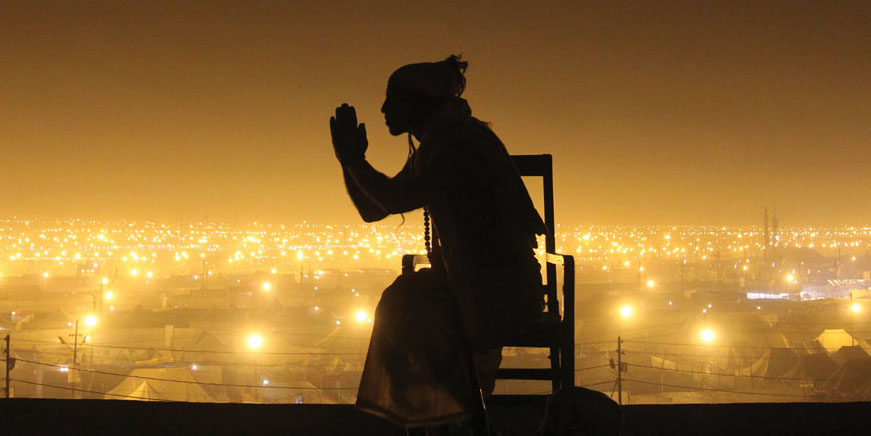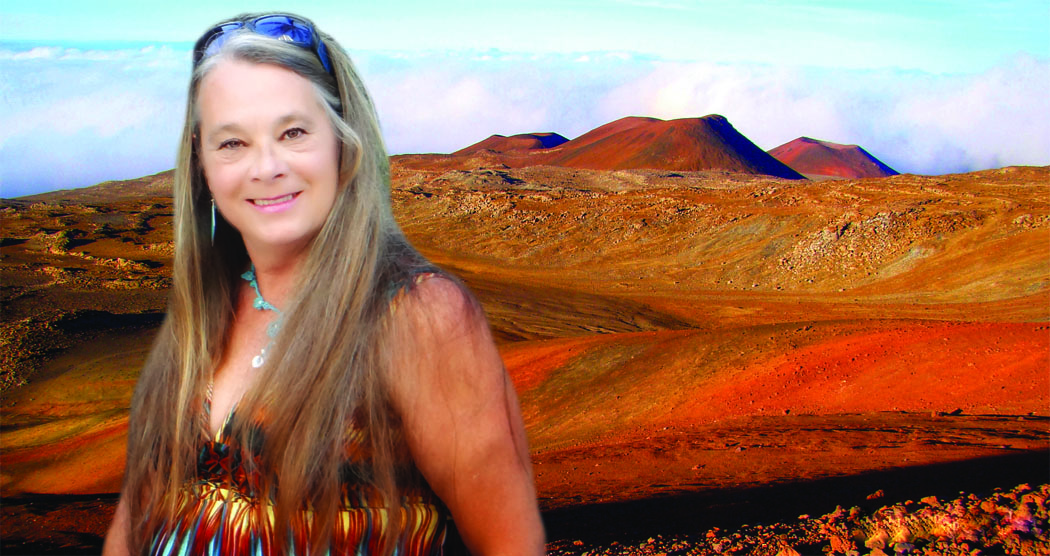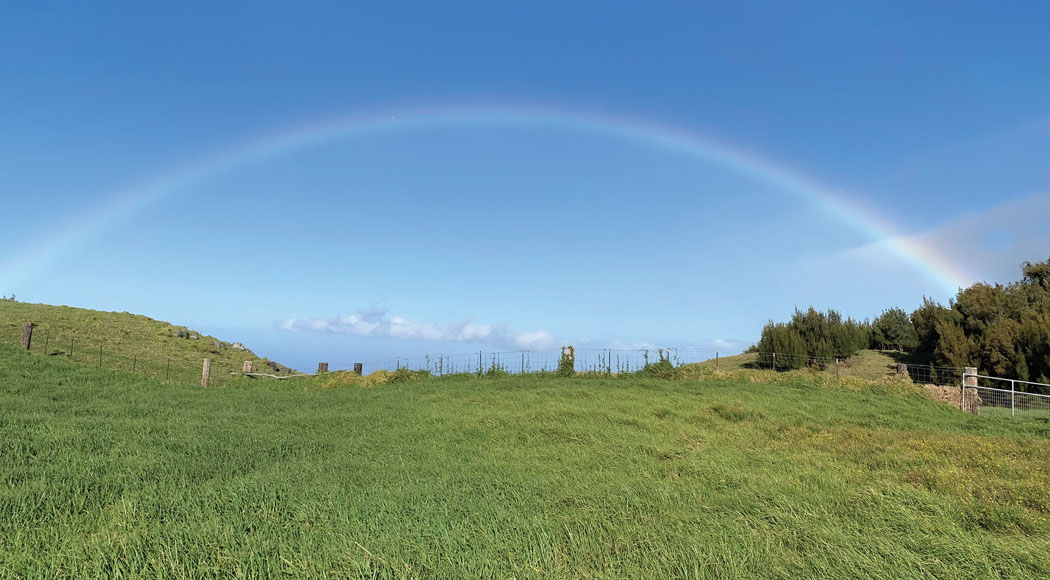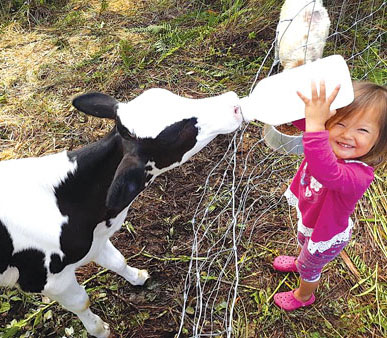
Animal Rescue Goes Hi-Tech Grassroots: Lava Flows and Dairy Farm Closures Help Create a Rescue Response
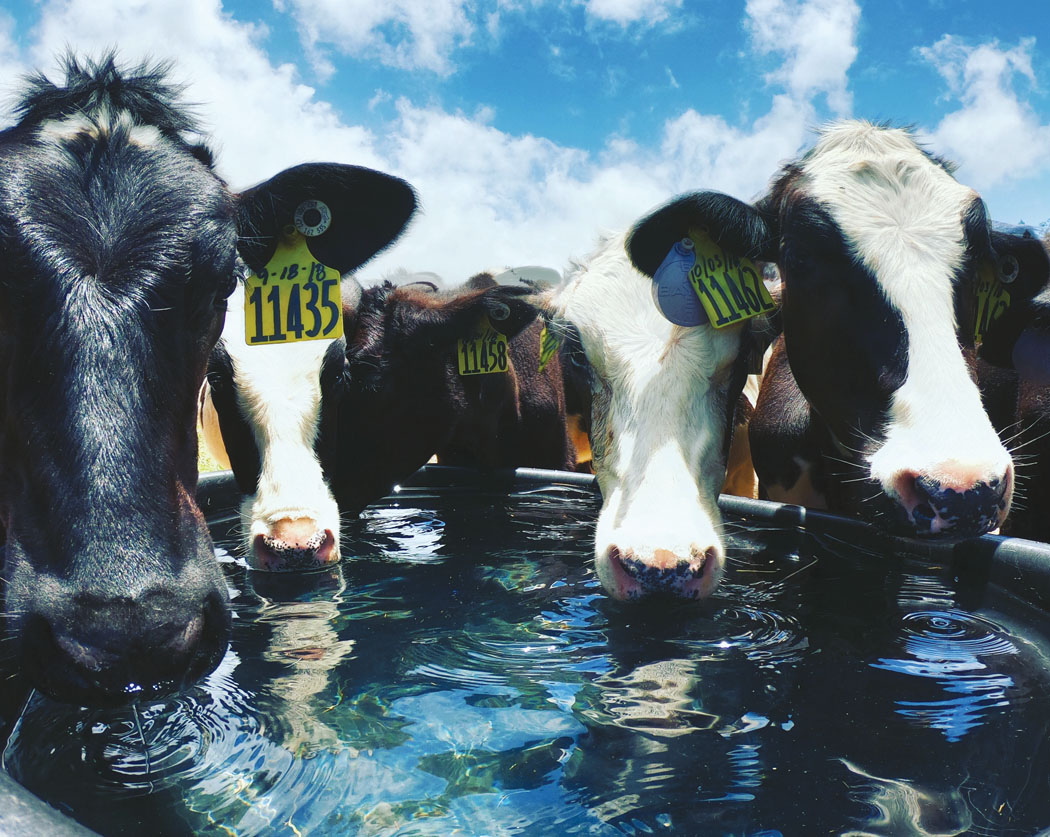
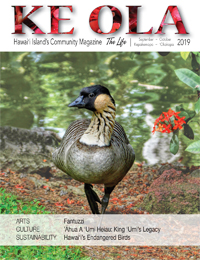
By Lara Hughes
With the recent lava flow and dairy farm shut downs happening on Hawai‘i Island, a number of grassroots animal rescue organizations have sprung forth from the ashes. There was suddenly a movement to save animals from suffering and slaughter, and reunite lost pets with loved ones. In large part, thanks to social media and platforms like GoFundMe, these organizations have been able to provide services, reconnection, and opportunities to widen the animal rescue circle.
Krishna Cow Sanctuary and Hawaii Lava Flow Animal Rescue Network are two such organizations that have stepped up to provide a local animal rescue network and offer a holistic approach to rehabilitation for rescued animals, the environment, and even business.
HOLI Natural Farming with Krishna Cow Sanctuary
Narayan Higgins was pursuing a degree in business administration before the cows came home to pasture—literally. He was sitting in a classroon at college, watching the clock, when a speech written by Steve Jobs was read aloud. “In Steve Jobs’s speech he says, ‘If you are in a room where you are constantly looking at the clock, that is not where you are supposed to be.’” Narayan immediately took those words to heart, stood up, walked out, and never went back again. Once he started doing what he really cared about, the pieces fell into place on their own.
Today Narayan is the head cow herder at Krishna Cow Sanctuary in Kea‘au. He has been able to rescue and place cows with people who keep the cows on their property, allowing them to graze. These clients pay a monthly fee and in turn the cows keep the grass “mowed,” fertilize the land, and naturally till the soil. Narayan puts the money he earns back into rescuing more cows and paying for veterinarian visits and medicine. It feeds into his holistic farming and business method that he has coined as HOLI Natural Farming: High Output Low Input. “To me that is one of the most important things to teach people.”

He was inspired by cows, but transferred the idea to his crops as well, “My wife had cows and I tried the milk…I realized, when I saw the process, that cows are outputting thousands and thousands of calories a day twice a day for years.” Narayan had tried planting tomatoes, “I output thousands of calories to grow a handful of tomatoes that equaled a couple hundred calories. I realized that the cow was the highest output for the lowest input.” He began planting crops that were naturally found in tropical climates and mirrored this idea, things like banana, taro, cassava, and papaya that grow and produce larger amounts of food using less resources and human input.
Today he has created a HOLI ecosystem at his property. Narayan has discovered that these crops also thrive on the fertilizer that the cows provide when they are grazing. Certain crops like taro or papaya can even be grown alongside the cows since the plants are not appealing to them or the fruit is out of reach. This concept, social media platforms like Facebook and GoFundMe, and a number of generous donors, allowed Narayan to rescue over 71 cows from a defunct dairy farm on-island in January of this year. Altogether he was able to take in 10 full-grown cows and over 60 calves. “I didn’t know what I was getting into,” he laughs, “at one point I had all 70 cows following me across the property.” Prior to the dairy farm rescue, Narayan had rescued 20 cows that he tended regularly, so the added cows brought the overall count to 90 that he’s now caring for.
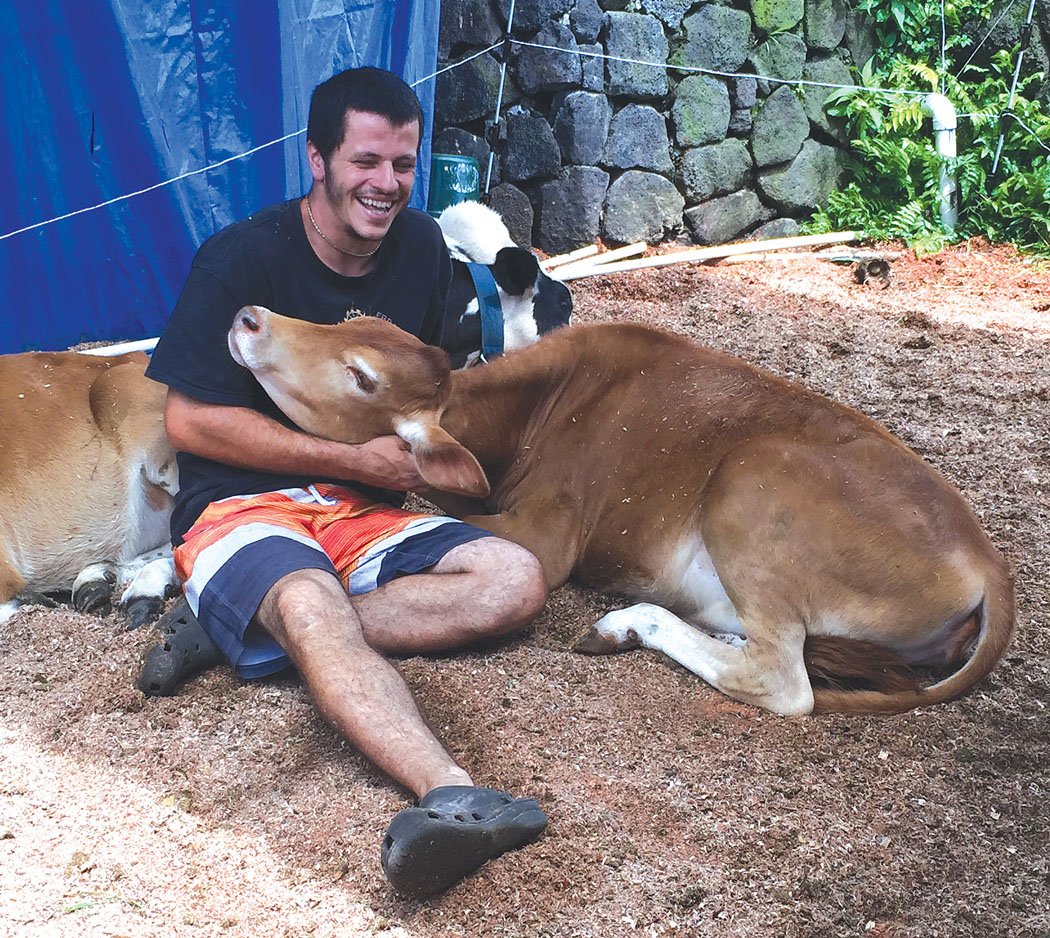
Community Partnerships Create an Emergency Response Center Via Social Media
Alessandra Nicola Rupar-Weber was born and raised in Vienna, Austria and moved to Hawai‘i Island in 2005. She is the creator of Vegan Aloha, an organization that hosts events, movie screenings, plant-based cooking classes, and workshops educating people about the benefits of veganism. She also created the Facebook group Hawaii Lava Flow Animal Rescue Network. The group is completely volunteer run and has benefited from the help of local experts like Syndi Texeira. Syndi was born and raised on Hawai‘i Island and has worked as a crisis manager and paralegal for many years. She is a compassionate animal advocate and an administrator with the Hawaii Lava Flow Animal Rescue Network (HLFARN).
In May 2018, when the lava started flowing in Puna and hundreds of animals were left behind, Alessandra lay awake at night overcome with concern. “The local animal organizations were not prepared or equipped to handle this major emergency,” she says, “So we created something similar to an emergency response center via social media, which was able to help about 700 pets and farm animals. Working all together, we did save many, putting them on foster farms all over the island—to sanctuaries and new homes.”
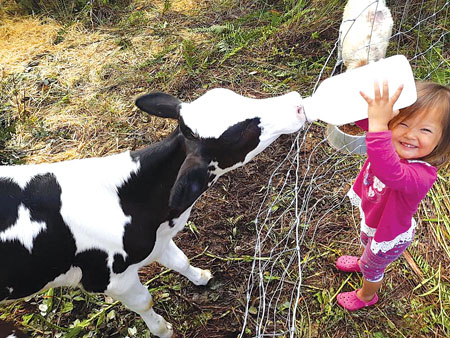
She recalls that the situation was overwhelming, but was amazed to find what a few dedicated and determined people were able to achieve, commenting, “People gave their all for weeks and some of us for months to help the animals in dire need with the help of local rescue organizations.” The rescue network is still very active more than a year later, reuniting lost pets with their humans, and finding homes for animals in need.
Alessandra read an article in a local newspaper in late 2018 about a dairy in ‘O‘ōkala closing. Again, she was up at night wondering what would happen to the 2,600 cows. “I contacted Stephen Rouelle, the co-owner of Under the Bodhi Tree restaurant, and Syndi Texeira, who I got to know and deeply appreciate during our work together with the Hawaii Lava Flow Animal Rescue Network, and asked if they would want to save cows with me. We gathered again some of the core group members from the Hawaii Lava Flow Animal Rescue Network and went to work.” Together they formed Hawaii Cow Rescue.
Syndi now plays a key role in the organization, “With this current mission, the Hawaii Cow Rescue, I serve as the negotiation and communication liaison between HCR by HLFARN, potential adopters, and the administration of the dairy.” She is tasked with creating an online database, logistics for transportation, locating viable homes, vetting adopters, and making follow-up visits.
By January 2019 they had mobilized a group of donors via social media, local media releases, and e-blasts. They were able to save 61 bottle-fed baby calves that were kept in crates at a barn, unable to walk or touch the ground. It took two weeks to find adoptive homes willing to bottle-feed the calves twice a day and give them the care and attention they needed. They delivered all 61 babies to their families in one day. “It was a crazy and intense day,” says Alessandra, “but we made it with the help of some awesome volunteers.” Since they were kept in crates the calves were stressed and some of them were very weak. “We had a few cases which needed to go to the vet but all of them are healthy now and thriving!” The organization also provided the first two weeks of milk replacer, calf starter feed, and initial vet care to all of the adopters.
Syndi adds, “We have been able to rescue cows every month since then.” By her count, as of June 19, they have been able to rescue 317 cows, with more rescues planned.
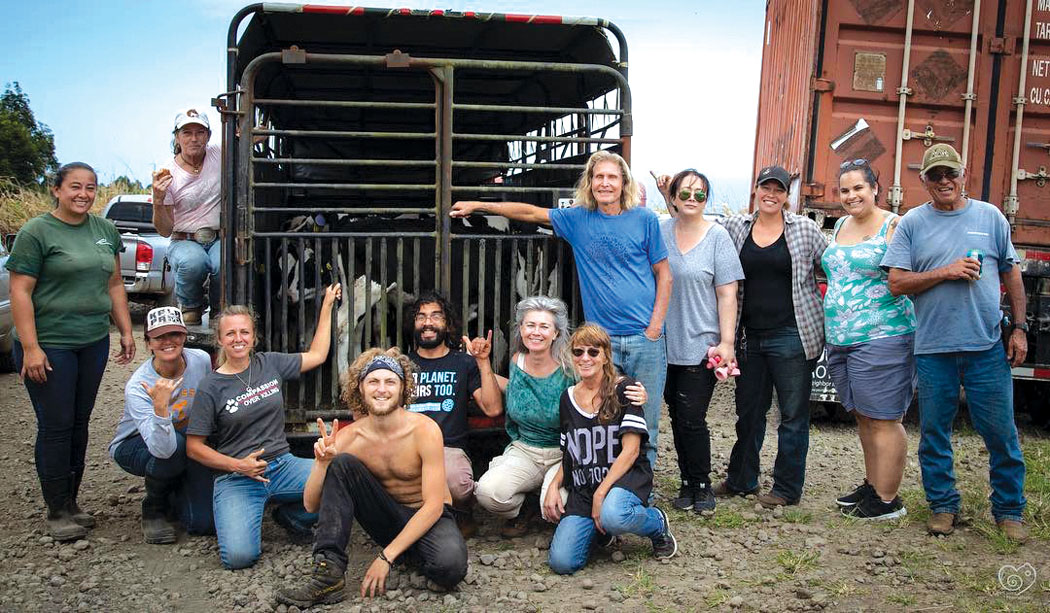
The Mission Moo-ving Forward
For Narayan, his cows are his life. He wakes up every morning at 4am to sterilize his milk pails and hand milk a few of the lactating cows before driving off to survey the fields, where a majority of the cows are hosted. At the end of the day he comes home to milk the remaining cows, eat dinner, clean up and go to bed before doing it all again. “I’m big on social media. I’m always posting pictures and videos of the cows all the time. I constantly get messages from people saying, ‘Thank you so much for what you’re doing, I had a bad day and I see the cows playing and I feel better.’” He also believes that being able to help people locally and across the globe in an ethical and sustainable manner is part of his calling in life. Narayan is looking at ways to make local products a viable way of life, and the cows he takes care of play a major role in that.
Alessandra and Syndi have experienced a lot together in the last year and they are planning to take the next step to become a nonprofit organization focused on rescue, rehoming, rehabilitation, and emergency services. “My dream is also to create a vegan sanctuary and retreat center where you can stay for relaxation, education, and healing together with rescued animals.” ❖
For more information:
facebook.com/KrishnaCowSanctuary/
facebook.com/groups/HLFARN/
